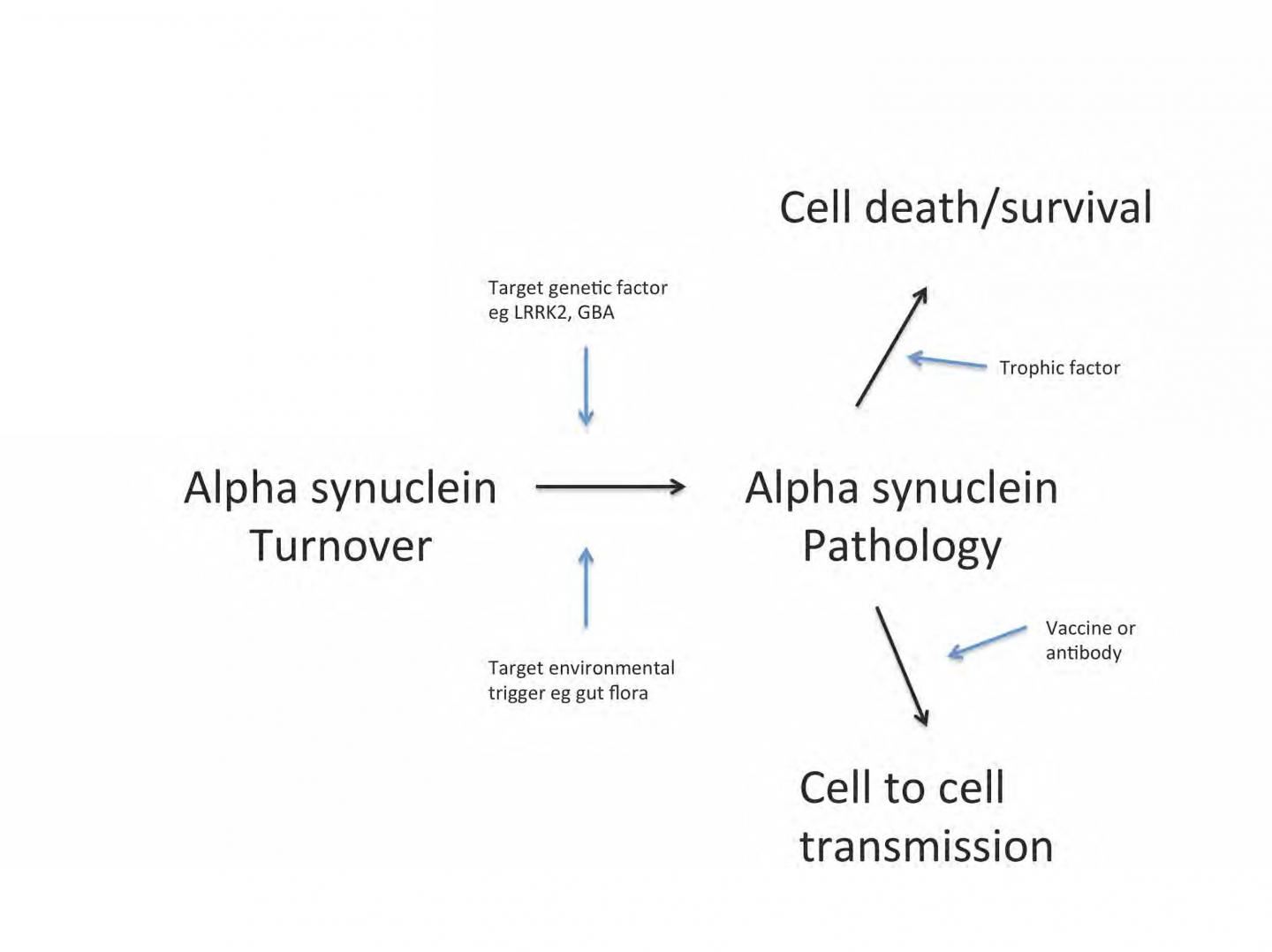Experts review current research trends and evaluate which of these are likely to succeed over the next two decades

Credit: Department of Clinical and Movement Neurosciences, UCL Institute of Neurology & The National Hospital for Neurology and Neurosurgery, London, UK
Amsterdam, NL, February 12, 2019 – Understanding of the processes involved in Parkinson’s disease (PD) degeneration has vastly improved over the last 20 years. In this insightful review, published in the special supplement to the Journal of Parkinson’s Disease, experts consider which of the existing strategies to slow down or stop the degenerative processes of PD are most likely to be successful over the next 20 years.
PD is a slowly progressive disorder that affects movement, muscle control, and balance. “Our understanding of PD pathophysiology has vastly improved compared to what we knew 20 years ago,” explained authors Tom Foltynie, MBBS, PhD, Department of Clinical and Movement Neurosciences, UCL Institute of Neurology & The National Hospital for Neurology and Neurosurgery, London, UK, and J. William Langston, MD, Associate Director, Stanford Udall Center, Department of Pathology, Stanford University, Stanford, CA, USA. “We believe we can be optimistic that the next 20 years will see major breakthroughs towards the discovery of therapies that may slow, stop, or reverse PD.”
The authors summarize recent advances, including identification of the major genetic risks for PD; development of more representative animal models of the disease; early successes using Antisense Oligonucleotide and vaccination approaches in other neurodegenerative diseases; and a translational pipeline of a broad range of repurposed drugs showing the first signals of potential efficacy, which are being driven forward through the various clinical trial stages.
“Slowing disease progression in PD has been described as the ‘holy grail’ of research,” Looking forward, the authors identify several promising developments, including:
- New therapeutic targets following the discovery of genetic risk factors, such as autosomal dominant mutations in the LRRK2 gene; and the enzyme glucocerebrosidase (GCase), which is reduced in patients with mutations in the GBA gene – including treatment with Ambroxol, a drug already licensed for lung surfactant deficiency.
- Targeting “non-motor” features of PD such as cognitive, speech, gait, and balance difficulties and autonomic failure, which may precede the onset of motor symptoms, and could provide an even earlier window to start therapy, with an opportunity to slow or stop the development of even the first motor symptoms of PD.
- Treatment with glucagon-like peptide 1 (GLP-1) receptor agonists that are licensed for the treatment of type 2 diabetes and have neuroprotective properties across the whole range of animal models of PD, including two alpha-synuclein models. There are plans for a phase 3 trial of exenatide, and there is growing interest in exploring other drugs in this class for their potential disease-modifying properties;
- Repurposing drugs used in other therapies such as those used to treat primary biliary cirrhosis and chronic myelocytic leukemia, and agonists of the beta adrenoceptor (Salbutamol, Clenbuterol).
- Use of immunomodulatory therapies to prevent or slow disease progression, including, for example, Azathioprine and Sargramostim.
- And finally, the authors mention the prospects for harnessing nanotechnology. “The grand vision would be to develop a therapy that would accurately target alpha-synuclein pathology, dissolve the toxic aggregates, and push the equilibrium back towards normal monomeric alpha-synuclein.”
“We now have better understanding of the processes involved in PD degeneration and can therefore have greater confidence that laboratory data and positive results from early clinical trials will ultimately translate to therapies that slow down PD progression,” commented Dr. Foltynie and Dr. Langston. “There are currently no drugs that have been proven to slow down PD progression. Demonstrating that one or several of the candidate approaches is successful will lead to a frameshift in patient care. Useful cooperation and coordination between investigators around the globe are significantly accelerating the path towards discovering agents that may slow, stop, or even reverse the progression of PD.”
###
ABOUT THIS SUPPLEMENT TO THE JOURNAL OF PARKINSON’S DISEASE
The Journal of Parkinson’s Disease published a special issue in 2017 to commemorate the 200th anniversary of James Parkinson’s “Essay on the Shaking Palsy,” and we highlighted eight of the most important advances in Parkinson’s research over the past 60 years. As we were working on that special issue, we commented on how the pace of Parkinson’s research has accelerated remarkably. We speculated that there would be more advances in the treatment and care of Parkinson’s disease during the coming 20 years than were evident during the preceding 200 years. Thus, the idea of a collection of short, forward-looking, and visionary articles was born. Eventually, we identified 19 topics for articles, and we are very excited about the outcome. In 1964 Bob Dylan sang “The Times They Are a-Changin’;” this special supplement clearly shows that the field of Parkinson’s is no exception. This supplement to is openly available at https:/
ABOUT THE JOURNAL OF PARKINSON’S DISEASE (JPD)
Launched in 2011 the Journal of Parkinson’s Disease is dedicated to providing an open forum for original research in basic science, translational research and clinical medicine that will expedite our fundamental understanding and improve treatment of Parkinson’s disease. The journal is international and multidisciplinary and aims to promote progress in the epidemiology, etiology, genetics, molecular correlates, pathogenesis, pharmacology, psychology, diagnosis and treatment of Parkinson’s disease. It publishes research reports, reviews, short communications, and letters-to-the-editor and offers very rapid publication and an affordable open access option. http://www.
ABOUT IOS PRESS
IOS Press is headquartered in Amsterdam with satellite offices in the USA, Germany, India and China and serves the information needs of scientific and medical communities worldwide. IOS Press now publishes over 100 international journals and about 75 book titles each year on subjects ranging from computer sciences and mathematics to medicine and the natural sciences. http://www.
Media Contact
Diana Murray
[email protected]
718-640-5678
Related Journal Article
http://dx.




